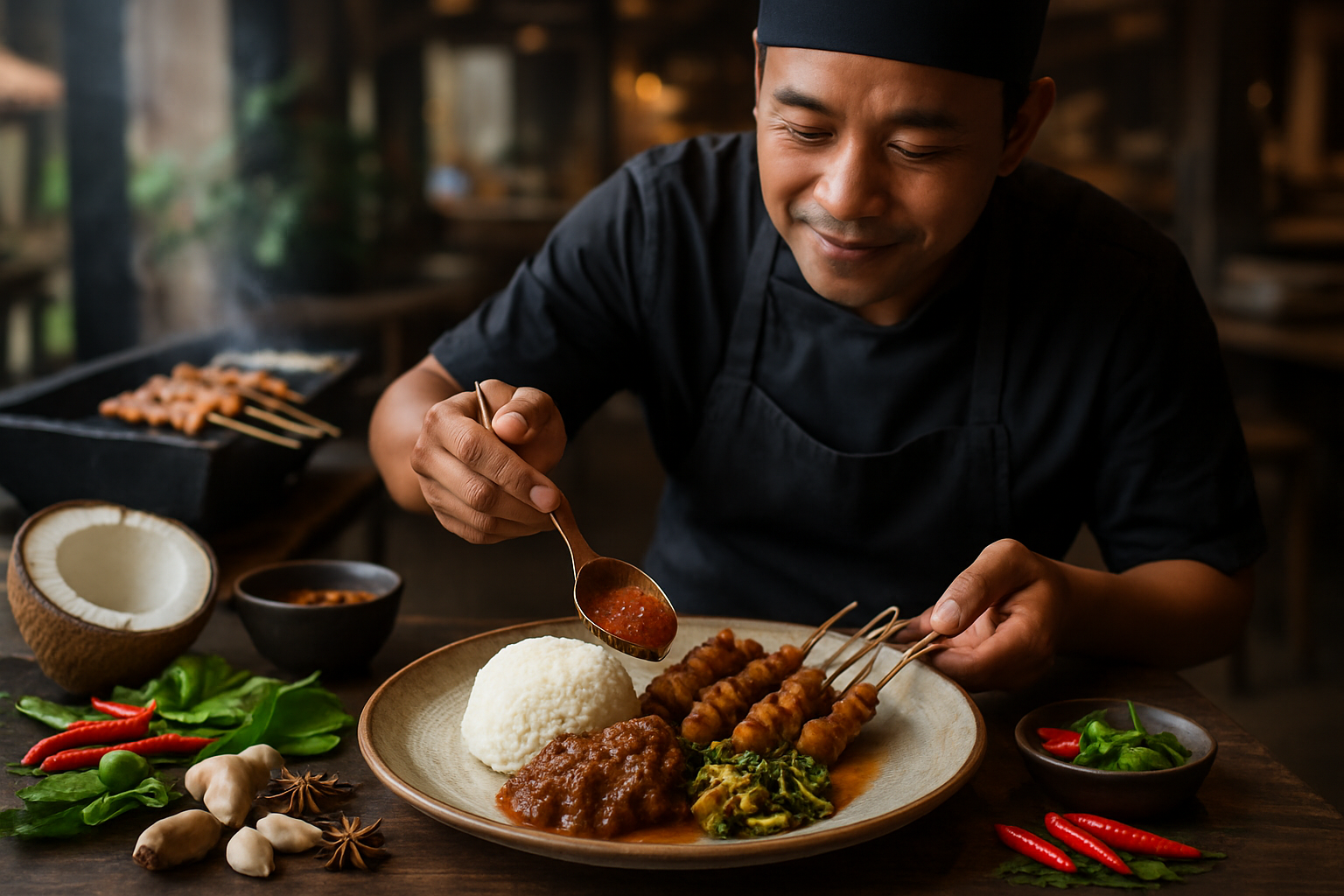Diving into the Exotic Flavors of Indonesian Cuisine
Indonesian cuisine, a tantalizing blend of vibrant flavors, aromatic spices, and diverse ingredients, has been a hidden gem for many food enthusiasts. This article delves into the unique aspects of Indonesian food culture and introduces new culinary experiences to the readers.

The Flavorful World of Indonesian Cuisine
Indonesia is a Southeast Asian archipelago with an extraordinary culinary heritage. The cuisine is as diverse as the country itself, with each of the 6,000 inhabited islands having its own unique dishes and cooking methods. The dishes are commonly defined by the mix of sweet, sour, salty, and spicy flavors, creating a taste profile that is both exotic and enticing.
The Staple Ingredients
The cornerstone of Indonesian cuisine is rice. It’s served in various ways, from the plain steamed rice to the aromatic nasi goreng (fried rice). Other staple ingredients include coconut milk, which adds a creamy texture and a subtle sweetness to dishes, and a variety of spices like coriander, lemongrass, and tamarind that lend depth to the flavors.
Signature Dishes to Try
Rendang, a slow-cooked beef dish simmered in coconut milk and spices, is a must-try. Its rich and flavorful sauce is a testament to the complexity of Indonesian cooking. Another classic dish is sate, skewers of grilled meat served with a tangy peanut sauce. For those with a sweet tooth, klepon, sweet rice balls filled with palm sugar and coated in grated coconut, is a delightful treat.
The Art of Indonesian Cooking
Indonesian cooking methods vary, with grilling, boiling, and frying being the most common. However, some regional dishes involve unique techniques. For instance, pepes is a method of cooking where food is wrapped in banana leaves and then steamed or grilled. This not only infuses the food with a distinct flavor but also presents it in an aesthetically pleasing way.
Indonesian Cuisine and Health
Despite its flavorful profile, Indonesian cuisine is not devoid of health benefits. The liberal use of spices and herbs provides a range of nutrients and antioxidants. Turmeric, used widely in dishes like nasi kuning (yellow rice), has anti-inflammatory properties, while ginger, a common ingredient in many Indonesian beverages, aids digestion.
Did You Know?
-
Indonesia is the world’s largest producer of nutmeg, a spice widely used in both savory and sweet dishes.
-
Tempe, a soy product that originated in Indonesia, is a rich source of protein and a popular meat substitute among vegetarians.
-
The spicy condiment sambal, made from crushed chilies, is a staple in most Indonesian meals and varies in flavor and heat depending on the region.
In conclusion, Indonesian cuisine offers a culinary adventure with its diverse flavors and unique cooking techniques. As you explore this exotic cuisine, you not only satisfy your palate but also gain insights into the rich cultural tapestry of Indonesia. This gastronomic journey is a testament to the wonders of food in bridging cultures and creating memorable experiences. So, why not take a foray into the delicious world of Indonesian cuisine?





